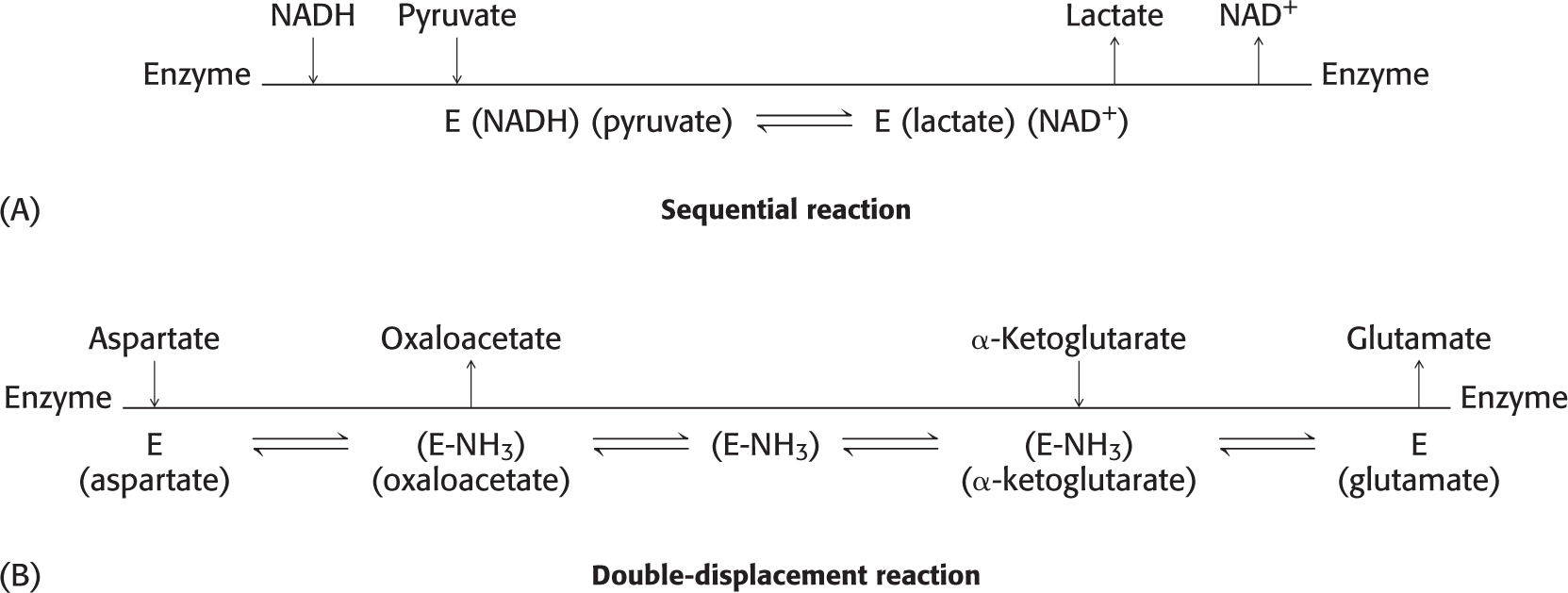
Figure 7.6 Cleland representations of bisubstrate reactions. (A) Sequential reaction. The first substrate (NADh) binds to the enzyme, followed by the second substrate (pyruvate) to form a ternary complex of two substrates and the enzyme. Catalysis then takes place, forming a ternary complex of two products and the enzyme. The products subsequently leave sequentially. (B) Double displacement. The first substrate (aspartate) binds, and the first catalytic step takes place, resulting in a substituted enzyme (E-NH3). The first product (oxaloacetate) then leaves. The second substrate (α-ketoglutarate) binds to the substituted enzyme. The second catalytic step takes place, and the Nh3 is transferred to the substrate to form the final product glutamate, which departs the enzyme.
[Leave] [Close]